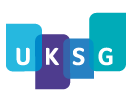Alicia: So where are we now? Open access (OA) is not a single, coherent global phenomenon, at least at this point. It is a global movement, for this reason UNESCO tracks OA policies in 156 countries around the world, and the nature and pace differ across regions. OA is more advanced for journal articles than for books and more advanced for books than for other types of academic content, including conference proceedings. It has progressed faster in STEM (science, technology, engineering and medicine) subjects than it has in HSS (humanities and social sciences) subjects.
Frances: While slower, the push in HSS subjects is from research funders, libraries and research institutions, not only for a change in business models but also for a real reduction in the costs associated with the publishing of books, while maintaining quality. The result is a mix of challenge and opportunity, for all stakeholders in scholarly communications. COVID-19 has, more than anything else, put into sharp relief that change is upon us.
Alicia: Yes. Research funder policies have proved to be a powerful driver of change and OA policies began to coalesce formally at national level in the UK during 2012 and the US during 2013. Since 2016, momentum has built steadily in Europe, with a joint statement by Member State Science Ministers supporting a full OA transition by 2020. Growth in gold OA had been slowing in journals and changing this was a key driver behind Plan S, which was launched in September 2018. Plan S is the initiative of cOAlition S, a consortium of funders and research agencies co-ordinated by Science Europe and supported by the European Commission and the European Research Council.
Plan S has successfully reignited conversation, focussed attention and brought a sense of urgency to the challenge of changing this. It has also led to much greater international awareness of transformative agreements which could stimulate more growth in OA than Plan S itself.
Libraries, primarily European libraries, but most recently libraries in low- and middle-income countries, have been experimenting since 2016 with ways to shift their procurement activities away from read-only access and toward both read and publish service provision. These so-called transformative OA agreements repurpose existing institutional spending with publishers to open content. They are powerful models because libraries and library consortia provide the lion’s share of funding in the current publishing landscape. If library payments are transferred to support OA, then publishers can also transform to be fully OA and full OA publishers can thrive.
Frances: For books, OA also continues to accelerate although from a smaller base. How this plays out for books and journals is rather different, in part due to there being so many small publishers in the scholarly monograph space. Then there is the broader economic context in which research and teaching now takes place. In a nutshell, investment in STEM research continues to rise while investment in teaching and research in HSS is under real pressure. That said, it is the intention of cOAlition S funders to mandate that books and book chapters must be OA by 2024, at which point we should see many more OA HSS books.
There are bigger challenges too and this context is important. The whole traditional university concept and infrastructure has been under attack from many quarters for different reasons for some time. A reshuffle is under way where there will be winners and losers, but the axes will not fall evenly. For many disciplines, research budgets will contract necessitating a rethink of how their knowledge infrastructures are constructed and how they choose to communicate and disseminate the new knowledge they are creating. Much of this will be driven by the younger generation who know how to take advantage of digital affordances.
Alicia: Concern about price increases drives broader concerns about anything that reinforces a publisher’s brand as a proxy for quality, publications as a primary unit of quality assessment and the existing market power and financial returns of publishers.
This understandable focus on cost constraint within libraries is really challenging at a time when investment in research continues to increase, particularly in STEM subjects, as does the number of researchers and research articles. Publishers are leveraging their ties to the researcher community to offer new products and services.
For journals, there is now an established infrastructure, impetus from research funders via mandates, impetus from libraries in their purchasing decisions, impetus from OA activists and, crucially, significant degrees of funding. There is a dynamic landscape for new business models around OA agreements between libraries, on behalf of the authors and readers on their campuses, and publishers.
Frances: I am less sanguine about books. They are more expensive to produce than they need to be. It is crazy, though, to put all monographs through a ‘Rolls Royce’ publishing process. Part of this is about a slower uptake in technology than has been the case with journals, but it is also a function of the role of the monographs in the academic promotion process. We need to move away from academia outsourcing the evaluation process to publishers based on a limited number of metrics, such as perceived prestige of the publisher – who is then expected to go through the effort of selling fewer copies at higher prices to cover their own investment – as well as the intermediaries needed to sell these long-form publications. Monographs are simply not as profitable as journals. Given how much more important monographs are for HSS subjects than STEM, this seems perverse at a time when library budgets are contracting for books to become more expensive. Ultimately there will be fewer monographs published and a significant number of smaller university presses will be casualties along the way, whatever the business model.
Alicia: Do you see any bright spots for books?
Frances: Yes, I do, for lots of reasons, but I will just talk about one here – usage. Springer Nature, amongst others, consistently records the growth in usage of OA books. They report that, compared to closed books, OA books have 2.4 times more citations and ten times as many downloads. More work is being done now on how to gather and interpret usage statistics, but it is becoming clear that not only academics are finding their way to these books as the latest Springer report, in September 2020, showed that downloads from the open web (‘anonymous downloads’) are generally double those from institutional network points (‘logged downloads’). Usage of monographs increased greatly as academic publishers made the contents of their publications available for free during the first months of the pandemic, although of course publishers are still digesting and analysing the usage statistics. Open access is critical not only for the dissemination of new knowledge within the scholarly community, but also for making the fruits of academic research available to others, especially to those who translate what the specialists say into language that is accessible to citizens of the planet. I believe this will become increasingly important as taxpayers want to see value for money from the research community.
There are opportunities for publishers here to use OA to increase the relevance of their publications to human well-being. Back in 2011, we published a book at Bloomsbury Academic in OA and because it was open, Noam Chomsky – linguist and philosopher – stumbled upon it and talked about it in his public lectures. The rest is history: an unexpected massive seller in paperback. Its title, little understood then, with even the sales reps balking at it, was The Precariat, now a shorthand for labour without predictability or security, as in zero-hour contracts. Without going OA, the book was at risk of becoming invisible outside of an academic ghetto. There are now many, many more examples of huge reach and impact.
Alicia: OA can facilitate accelerating science and increasing the visibility and impact of authors, their institutions and their funders, and is therefore likely to grow. Academic publishing has always been not only about conveying information, but status as well.
Let’s talk about technology, new tools and services as well. There appears to be growing enthusiasm for open platforms, rather than open journals, as the platform of choice for disseminating research articles. There are exciting possibilities for innovation in research services by harnessing open content with technology such as artificial intelligence and big data. There is, of course, also an array of social equity and social justice concerns around artificial intelligence to address. In this context, I have been intrigued by discussions in Germany and the Netherlands, for example, about the principles that should guide public and public-private partnerships for research infrastructure. There is a move away from hoping the market will provide solutions to changing needs and a sense that research infrastructure should be community designed and governed.
Frances: I agree. Initiatives like Invest in Open Infrastructure, COPIM and OPERAS are really interesting and they are all contributing to this effort in the book space. That said, there is much work to be done by all book publishers to improve their metadata. I suspect book metadata lags behind journal metadata because digitization came later, because the larger number of formats and styles is more complex and because there is no single platform through which books are discovered, accessed and purchased. Sorting out this metadata mess will help reduce costs and aid discovery. Of course, projects like Metadata 2020 and the work of NISO as well as others are all working towards enabling books to catch up.
Beyond that particular gripe of mine, I do believe that with more of the foundational content in monographs being available open access, hopefully more people will be inspired to further access and discover the world’s body of knowledge. At CEU Press, we have just launched an OA initiative called Opening the Future, where we are hoping to contribute to just that.
Alicia: These are such big and exciting challenges. New models such as this, and solving what you call the metadata mess, are crucial parts of the broader work necessary to craft open science services built over open knowledge. Due to COVID-19, library budgets on the whole will be lower given the budget pressures universities face and yet some hugely creative work needs to be done by technology companies, by publishers, by universities and by libraries to make the most of the funds available to drive both service innovation for knowledge workers and more openness.
Frances: With so many drivers of change, it is not easy to predict the future. Half-full or half-empty, the 2020 glass blower is still shaping the container as we sip from it. Agility, creativity, embracing change and some calculated risk-taking are essential for publishers.



